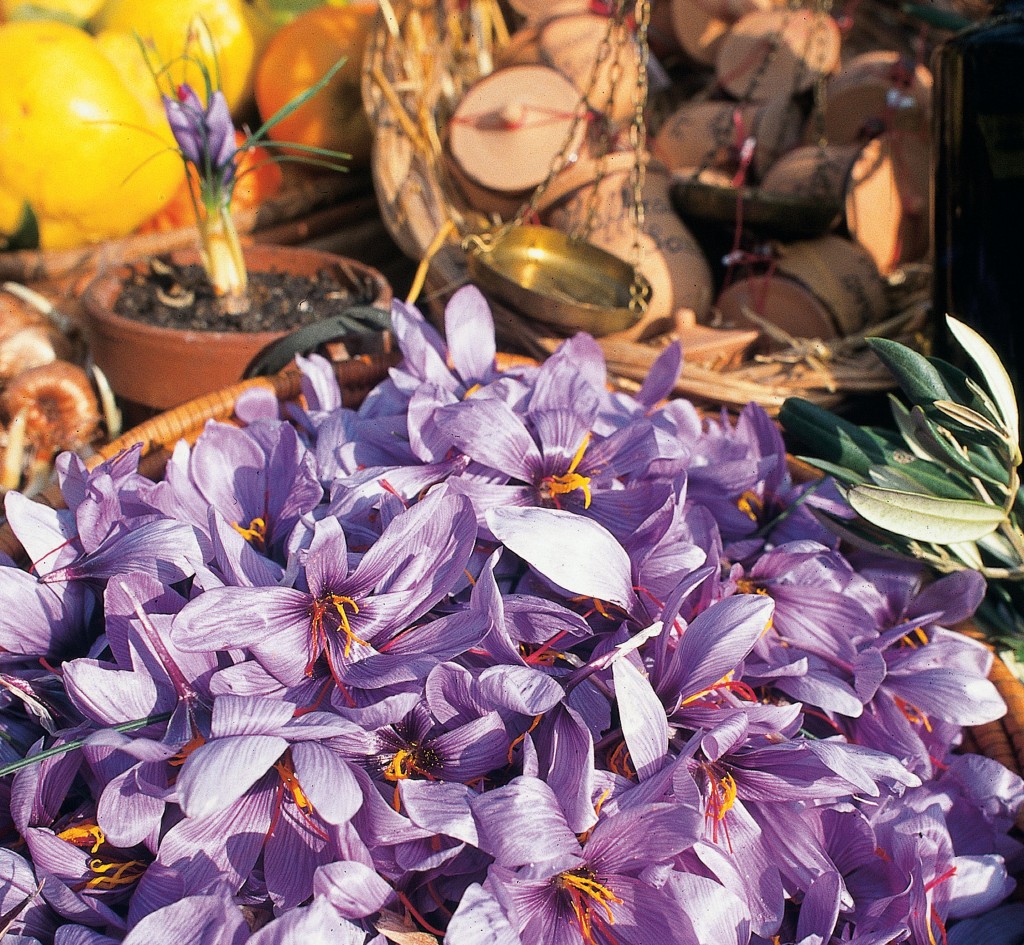PDO San Gimignano saffron


A must-have ingredient in the kitchen with very ancient origins
Multiple testimonies attest, starting in the 13th century, to the product's origin in San Gimignano.
The quality of this product has been witnessed since the 1200s and is documented not only by a significant export of the product to other Italian places (Pisa, Genoa), but also by the unprecedented direction taken by the traffic current to Eastern and African countries (Alexandria in Egypt, Tunis, Damietta, Acri, Tripoli and Aleppo).
The earnings derived from the saffron trade were so high that they made the fortunes of not a few families, some of whom also decided to employ them in the construction of the famous towers, still a source of pride for the city.
Characteristics
PDO San Gimignano Saffron comes in intact filaments with an orange-red color and has a very intense flavor.
The composition of the soil of San Gimignano is generally sandy: this gives the PDO San Gimignano Saffron its extraordinary characteristics.
The saffron production area is represented exclusively by the territory of San Gimignano.
PDO San Gimignano Saffron comes in intact filaments with an orange-red color and has a very intense flavor.
The composition of the soil of San Gimignano is generally sandy: this gives the PDO San Gimignano Saffron its extraordinary characteristics.
The saffron production area is represented exclusively by the territory of San Gimignano.
Production process
Saffron is obtained exclusively from the red, roasted part of the flower stigmas from the cultivation of the bulb-tuber "crocus sativus L." Many operations are still carried out by hand as they were in the Middle Ages: sorting the bulbs, picking the flowers in the early morning hours, and hulling and drying them by the fire.
Saffron is obtained exclusively from the red, roasted part of the flower stigmas from the cultivation of the bulb-tuber "crocus sativus L." Many operations are still carried out by hand as they were in the Middle Ages: sorting the bulbs, picking the flowers in the early morning hours, and hulling and drying them by the fire.
Gastronomy
PDO San Gimignano Saffron is used in gastronomy, the confectionery industry and pharmacy.
In cooking, it is used for numerous preparations, from rice or fresh pasta dishes to meat or fish main courses, in traditional recipes such as "tripe with saffron" or "mussels with saffron".
The product is present in catering and in some local specialties, also in connection with other typical San Gimignano products such as bread with vernaccia and saffron and schiacciata with saffron.
It is also used to flavor and give color to desserts and ice cream.
It is used in moderation to avoid too intense flavors.
PDO San Gimignano Saffron is used in gastronomy, the confectionery industry and pharmacy.
In cooking, it is used for numerous preparations, from rice or fresh pasta dishes to meat or fish main courses, in traditional recipes such as "tripe with saffron" or "mussels with saffron".
The product is present in catering and in some local specialties, also in connection with other typical San Gimignano products such as bread with vernaccia and saffron and schiacciata with saffron.
It is also used to flavor and give color to desserts and ice cream.
It is used in moderation to avoid too intense flavors.


